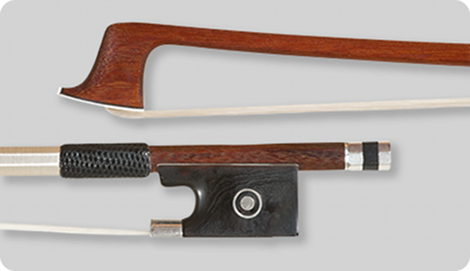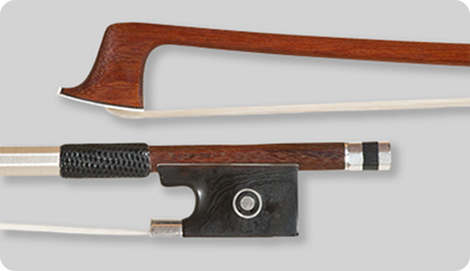JOSEPH HENRY, L'ENFANT PRODIGE
"La valeur n'attend pas le nombre des années! " These are the words used by M° J.F. Raffin to describe Joseph Henry who arrived in Paris in 1837 at the age of fourteen, one year in advance than his thirtyish colleague Pierre Simon.

Violin bow by J. Henry in silver and tortoise ca. 1860
Born in Mirecourt by Didier Amable Henry, a bow maker and winegrower , and Agnes Therese Bichet on December 10, 1823, the young Joseph, after having made a short apprenticeship in his hometown, he reached Paris when he was only fourteen years old.
Georges Chanot hired him and introduced him to this job, he had a considerable amount of Pernambuco ( only God knows how much every bowmaker envies him!),but as he was mainly a luthier, he was not able to teach him the bowmaking secrets. Perhaps this is why, despite having a talented hand, that was one of the greatest of all time, he failed to reach the stylistic level of Dominique Peccatte.
In the first half of the '40s, even if he will never work for him, he begins to attend just Peccatte's workshop, where he tries to refine his style, partially succeeding in it. As evidence of this collaboration the book "L'Archet" by Raffin and Millant, shows a photograph of a cello bow model "col de Cygne"with the frog and the stick by Henry Peccatte.
After the return of Dominique Peccatte to Mirecourt, occurred in 1847, Pierre Simon as you may remember, takes up the laboratory and at the end of 1848 he begins working with Henry. In this period is quite common to find bows wholly built by Henry and stamped as Henry Simon. The latter, thanks to fifteen years of experience more , is much more clever than the former.
Although if younger and inexperienced, or with less resources available, Joseph in 1851 ends the relationship with Simon and opens his own workshop in rue Vieux Augustins at the number 8, very close to that of J.B. Vuillaume.
In addition to continuing its collaboration with Vuillaume, born since the time of Simon, he also makes several bows with tortoise shell frog with a decorative silver called "paniers fleuris" for GRAD Frères.
Not much is known about the final years of this craftsman. He moved to rue Pagevin and probably continued to work until July 19, 1870, the day in which he died prematurely at the age of forty-six.
The character and the style

Unfortunately I do not have pictures of bows by this author, so you have to rely on the network this time as well.
As mentioned earlier, Henry's style is dominated by the influence of Dominique Peccatte, the main differences you have with the great master are mainly the development of the bevel of the head and the length of the plate of the frog,
With reference to the bevel, as you can see, although in this example it is particularly strong, so that I doubt about the originality of the head, it turns on itself making it much less open on the arrival.
For the frog he uses , contrary to Simon, the classic Peccatte throat, but due to the shorter length of the plate , rather than to reveal the well-known classical contemptuous sneer of his teacher, he gets a good-natured, though not unpleasant, yawn.
The mechanism is still, even if briefly, the old one , and his bows own a real and powerful character , and often rival, if not exceed, those of the master.
So long
Paolo
|